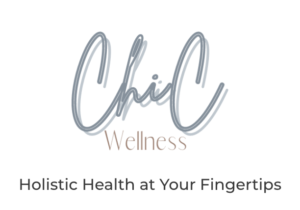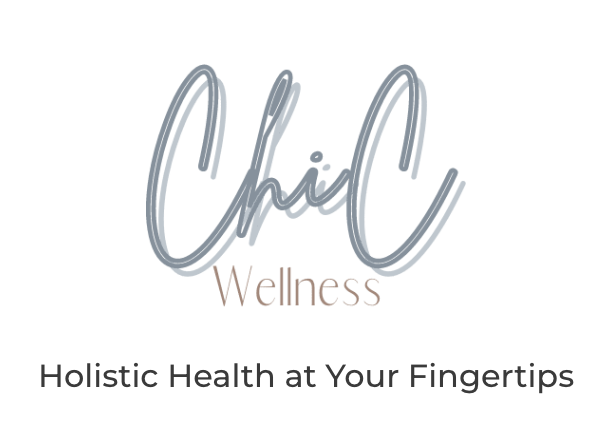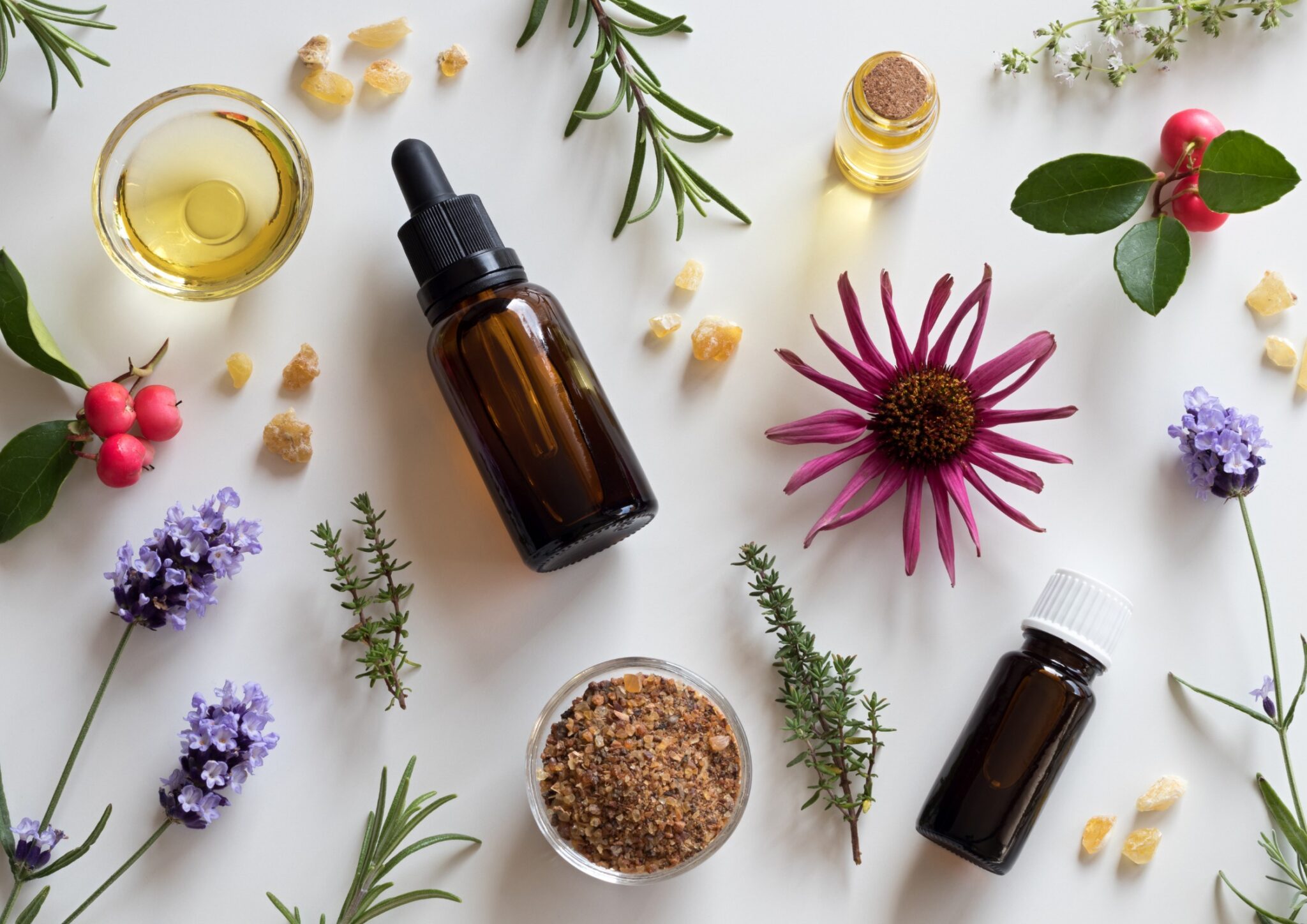Table of Contents
ToggleTable of Contents
What Are Essential Oils?
You’ve seen them on store shelves, you’ve smelled them on the person sitting next to you on the airplane, or maybe you even have a few bottles sitting on your bedside table—but what are essential oils exactly? Are they simply a fancy beauty product? Are they a new fad that’ll soon pass?
If you’ve never used essential oils, or if just have limited experience with them, they might seem like a complete mystery. The truth is, millions of people use essential oils every single day for things like cooking, cleaning, personal hygiene, fitness, sleep, overall health, and more.
What is an essential oil? So, what are essential oils? Scientifically speaking, essential oils are volatile aromatic compounds. In less scientific terms, they are the essence of plants, taken from roots, bark, flowers, seeds, and other plant parts. Did you know that an essential oil is what gives a plant its scent? Essential oils can also protect a plant from predators or environmental conditions.
How long have essential oils been around?
Not only do millions around the world enjoy essential oils today, but they’ve been utilized by dozens of cultures throughout history. Though it might seem like you only started hearing about essential oils within the last few years, they’ve actually been in use for hundreds of years. Ancient civilizations used plant extracts for things like healthcare, aromatherapy, beauty treatments, food preparation—the list goes on. In modern times, we’ve perfected the use of plants in everyday life, and finally have the technology to truly harness the power of the earth.
What are essential oils good for?
Those who are new to essential oils might be wondering, “What do I use them for?” If you’ve had a bottle of essential oil on your kitchen counter or in your closet for a while and aren’t exactly sure how to use it, you’re not alone. The good news? Learning how to use essential oils is easy. Like the peoples of the ancient world, we too have dozens of practical applications for essential oils today.
For example, essential oils can be used to:
· Promote healthy-looking skin.
· Cleanse the air and eliminate odors.
· Help maintain a healthy respiratory system and feelings of clear breathing.*
· Support good oral hygiene.*
· Promote healthy digestion.*
· Create an uplifting atmosphere.
· And more!
As you can see, there are plenty of applications for essential oils in our daily lives. Here are a few examples of ways you can use essential oils if you’re just starting out.
· Diffuse a few drops of essential oil using a diffuser.
· Place a drop of oil in your hands, rub your palms together, and inhale deeply.
· Apply essential oils to the wrists and wear as a personal fragrance.
· Add a drop of oil to your moisturizer or face cleanser to promote healthy-looking skin (try essential oils like Lavender oil or Frankincense oil for this). · Put a few drops in a glass of water for internal benefits (Lemon oil and Grapefruit oil work well for this).
Don’t wait another day to experience the amazing benefits of essential oils. Still wondering how to use essential oils? It’s easier than you might think. Leave a comment below and I’ll answer your essential oil questions!
Special Types of Essential Oils That You Should Know!
There types of essential oils that are extracted and graded at different stages of the operation. Every essential oil produces differing grades comprising of a broad range of chemical constituents using a process known as fractional distillation (the isolation of volatile components of various boiling points in a mixture through the gradual raising of temperature and the separate collection of each component). This is an unusual occurrence in the production of essential oils. Let’s take a look at the different grades of essential oils
- Extra Grade: The first set after an hour or two of steam distillation, considered by many to contain the finest notes from the distillation method. It is normally the most costly since it contains about 30 distinct chemical constituents.
- Grade I–III: As the steam distillation process continues, essential oil collections are taken every few hours, which make up less potent (and expensive) oils in descending order: Grade I, then II, and finally III.
- Complete: Represents the whole distillate encompassing all the collections from the entire distillation process. This synergy oil offers maximum fragrance potency.
In addition to the antioxidant boost essential oils provide when applied to the skin, the oils also induce feelings of wellness and vitality through a process known as “entrainment.” According to researchers in Washington using Tainio Technology, essential oils have the highest vibrational frequency of any natural substance known to man. The higher frequency of the oil, through the principle of entrainment, will raise the vibratory quality of that individual.
For example, their technology has revealed the following frequencies:
The frequency range of a healthy human body is 62-70 MHz.
When the frequency of human cells falls below 62MHz, they begin to change (mutate).
When you have a cold or the flu, your body’s frequency is 58 MHz.
You vibrate at a frequency of 55MHz when candida is present in your body.
The frequency of an Epstein-Barr virus-infected body is 52 MHz.
The frequency of a body where cancer can appear is 42 MHz.
The frequency at which the death process begins has been measured to be 20 MHz.
Essential Oil Research Articles
Aromatherapy is described as “the therapeutic application or medicinal use of aromatic substances (essential oils) for holistic healing” by the National Association for Holistic Aromatherapy (NAHA).
The International Standards Organization (ISO) described essential oils in 1997 as a “chemical obtained from vegetable raw material, either by distillation with water or steam, or from the epicarp of citrus fruits by a mechanical operation, or by dry distillation.”
Essential oils have been discovered to have varying degrees of antimicrobial activity and are thought to have antiviral, nematicidal, antifungal, insecticidal, and antioxidant properties. Massage, topical applications, and inhalation are also aromatherapy applications.

The Best Types of Essential Oils
1. Turmeric Essential Oil
Turmeric essential oil is derived from the Curcuma longa vine, which belongs to the Zingiberaceae family–the same as ginger–and can be extracted through conventional steam distillation, which loosens up the essential oils from the plant as well as plant components. This is usually achieved with the turmeric plant’s rhizome, which is the plant’s underground stem that sends out roots and shoots.

It is worth noting that curcumin has not been recorded in turmeric basic extracts, as it has in oleoresin and CO2 extracts.
If dosed and diluted correctly, turmeric oil is suitable for inhalation, topical use, and ingestion. Try any of the suggestions below, but remember to contact a doctor if you are being cared for with a medical problem or are already taking pharmaceuticals.
10 Important Use Of Turmeric Oil
- Cancer-Fighting Properties
- Protects Brain Cells
- Fights Pain and Inflammation
- Powerful Antioxidant Capabilities
- Antimicrobial Benefits–Fungus and Bacteria
- Use Turmeric Oil to Help Manage or Prevent Diabetes
- Potential Anti-Seizure Applications
- Aide for Gastrointestinal Health
- Safe for Backyard Gardening
- Bug Repellent
2. Lemon Grass
Lemongrass essential oil benefits are many, and it ranks first in antimicrobial ability. It is also one of the most “medicinal” natural remedies available. That is why it is important to understand how to better integrate lemongrass into your natural health routine!
One of the first capabilities I look for is that it’s an antioxidant because that indicates an active healing effect. The compound citral is the perfect example because it can increase the activity of a key phase II detoxification enzyme known as glutathione-S-transferase. The lemongrass essential oil has proven to be a potent detoxifying agent.
We see that strength plays out in its many beneficial actions. To list a few, lemongrass essential oil uses have been studied for the following actions:

- Anti-inflammatory
- Antifungal
- Antimutagenic
- Antimalaria
- Antioxidant
- Antiparasitic
- Detoxification
- Neurobehavioral
- Pain relief
- Lowering cholesterol
3. Calendula

Calendula oil is one type of essential oil that helps the skin in ways that few other oils do. It is calming and curing, and it can aid in the treatment of fungal diseases, rashes, sunburns, and a variety of other ailments.
4 Unbelievable Uses of Calendula Oil
1. BACTERIA
Calendula oil has long been used as an antibacterial drug for wound care. Calendula was a key first-aid herbal oil used in balms, creams, and poultices to prevent infection during World War I and previous conflicts. If not in a poultice, a calendula extract or infusion was most certainly used in their preparations, preserving therapeutic properties in a functional way.
2. FUNGAL OUTBREAKS
Essential oils are commonly discovered to be antifungal, no doubt as a result of their function in defending the plant from which they came. This is fantastic news for us since essential oils have simple applications and are (usually) fun to use.
Brazilian researchers checked the antifungal properties of calendula essential oil in the lab–in vitro–in 2008. Twenty-three fungi strains were selected, and calendula oil was applied to each of them in a Petri dish. What was the end result?
The antifungal assay findings revealed for the first time that the essential oil has high antifungal potential: it was successful against all 23 clinical fungi strains examined. Calendula oil joins the ranks of other antifungal powerhouses, cementing its reputation as a curing and defensive must-have.

3. SUNBURN
Sunscreen is vital for shielding the skin from potentially cancer-causing UV rays, but the additives and ingredients in commercial sunscreen may be poisonous in their own right! The pursuit of an effective, natural, and preferably do-it-yourself remedy.
The use of sunscreen persists. Since you can’t always see or feel the harm that UVA rays do, a natural solution must be accurate in experiments, not only anecdotal or retrospective, since you can’t always see or feel the damage that UVA rays cause.

Calendula essential oil was checked for its UV-protective potential in 2012 when it was mixed into a sunscreen cream at a 5% dilution. There had been no prior research; the idea to pursue it originated from conventional usage. Calendula essential oil was discovered to have good sun protection abilities as used as part of protective cream.
Calendula is an element to search for whether you are creating your own sunscreen solution or searching for a natural commercial alternative.
4. INFLAMMATION
Topical inflammation may cause anything from unpleasant disturbances to painful complications. Calendula is one of the finest anti-inflammatory spices, bulbs, and essential oils, and it has a well-deserved role in natural remedies. The researchers compiled a list of significant monographs on the therapeutic powers of calendula.
Calendula flower is used to make compresses for wounds that are not healed well, cuts, rashes, boils, and dermatitis.
This validates the common usage of calendula petals and extracts for curing and healing inflammation and wounds, and elevates it to a leading position in our natural medicine cabinets. For flexibility, have both an extract and an essential oil or flavored carrier oil on hand.
4. Ylang Ylang
If frankincense is the King of Essential Oils, the advantages of ylang ylang essential oil render it his Queen! Simply stated, the medicinal effectiveness of this effective treatment is astounding, and the literature supporting clinical statements is extensive.
Ylang ylang oil is well-known, and you will use it in a variety of fruit, body care, and cleaning items.

7 Advantages of Ylang Ylang Essential Oil
- 1. Soothes Inflammation
- 2. Decreases Blood Pressure & Heart Rate
- 3. Calming Applied Topically
- 4. Anti-Diabetic
- 5. Insect Repellant & Insecticidal
- 6. As a Surface Treatment
- 7. An Aphrodisiac
5. Frankincense

The benefits of frankincense essential oil among the other types are so extensive that it is not only recognized as the “King of Oils,” but it is now one of the most common natural remedies on the market today. And not without excuse! Its anti-inflammatory and anti-cancer properties have been on the radar of experts all over the world for many years, and science is now catching up to conventional folk medicine in terms of frankincense essential oil benefits!
The Benefits of Frankincense to Us
- 1. Boosting the Immune System
- 2. Fighting Pain and Inflammation
- 3. Preventing & Treating Cancer
“Discover your own Essential Oil!”
REFERENCES
Essential Oils for Pain and Inflammation & Remedy Guide by Dr. Eric L. Zielinski
About The Author

My mission is to bring greater awareness about the power of the ancient wisdom, art, and science of Traditional Chinese Medicine (TCM) and to teach people that there is a better and more sustainable way to reach the best version of themselves. I inspire and lead others using accountability practices that allow others to take greater responsibility for their health and wellness. I want everyone to be a willing participant in the lifestyle changes that may be necessary to reach optimal and sustainable health.
DISCLAIMER
This Information provided by AntonikaChanel LLC on Antonikachanel.com is for general informational purposes only. Everything material on the Site is supplied “entirely”. We make no representations or warranty of any sort, as to the adequacy or completeness of the content. This website is under no responsibility for any loss or damage arising from the use of this site or reliance on any information provided on the site.


